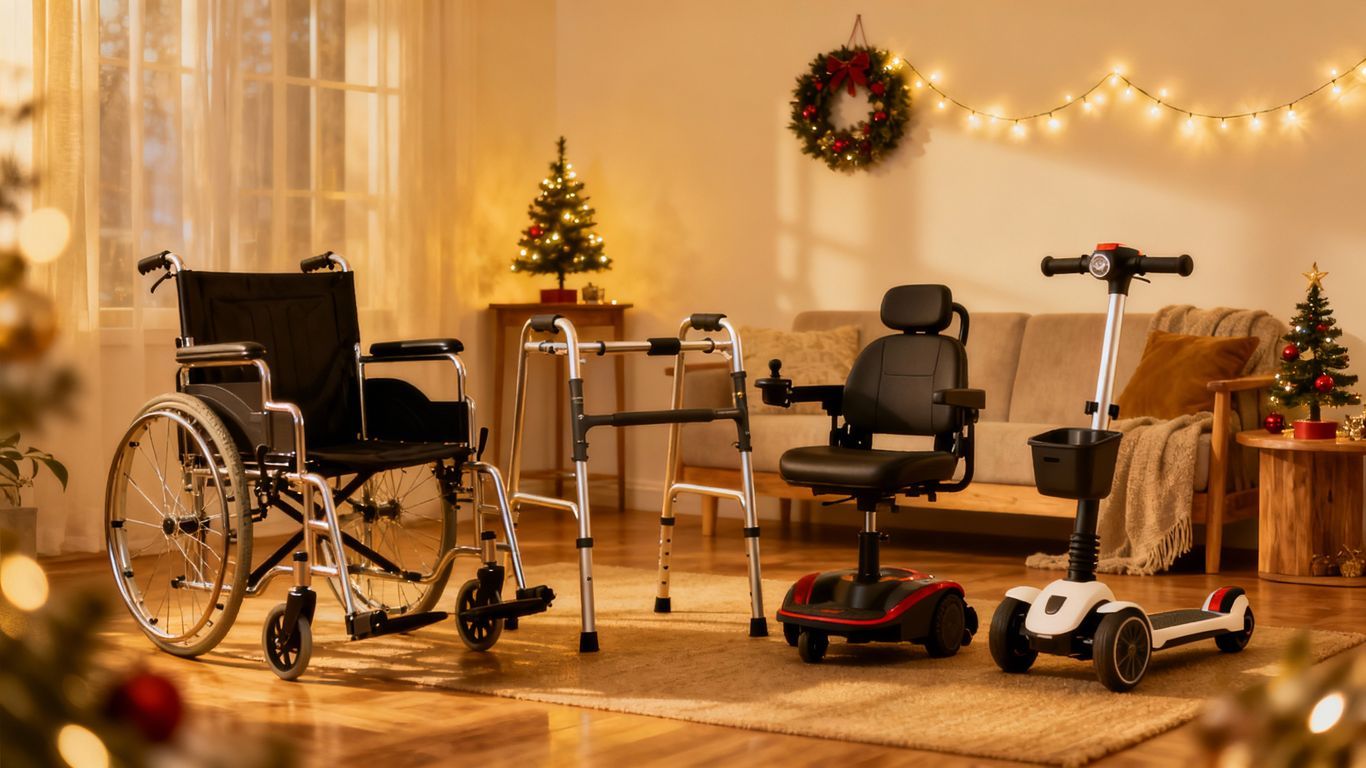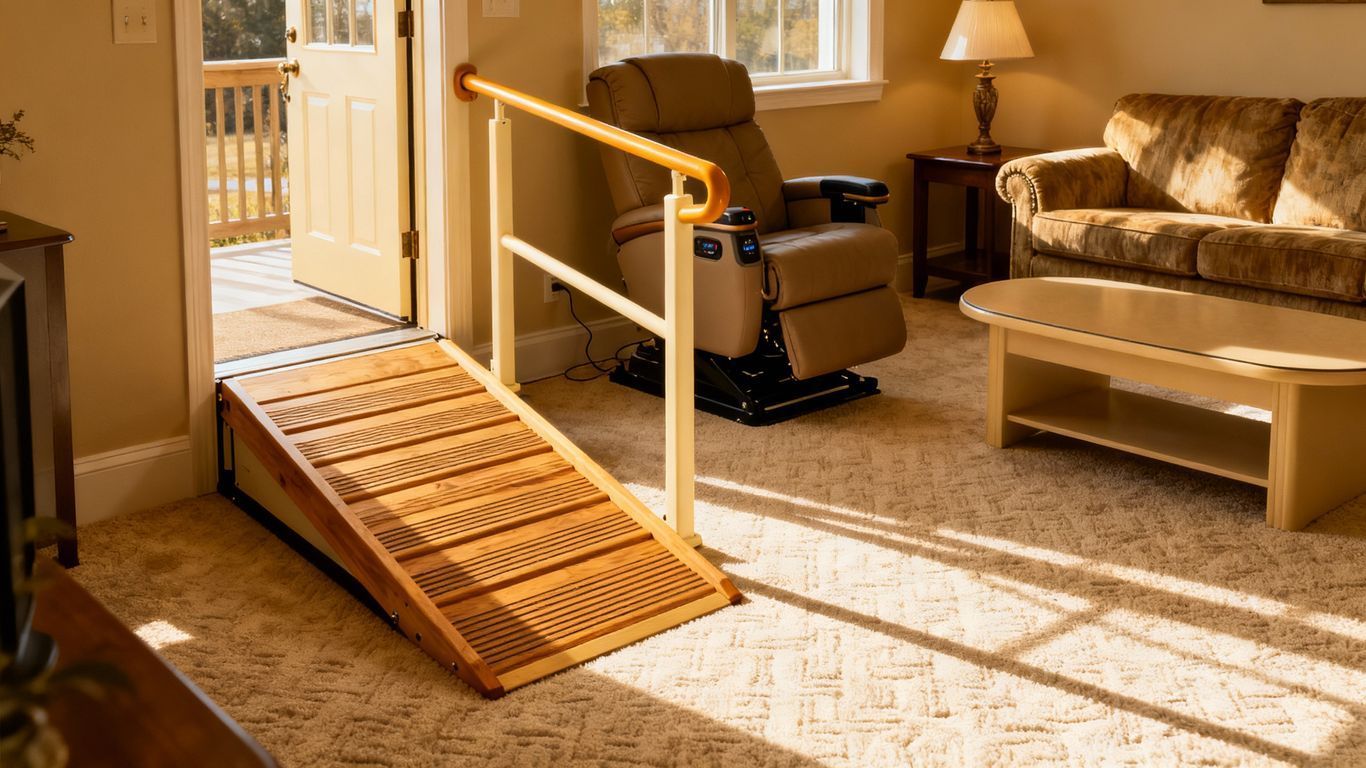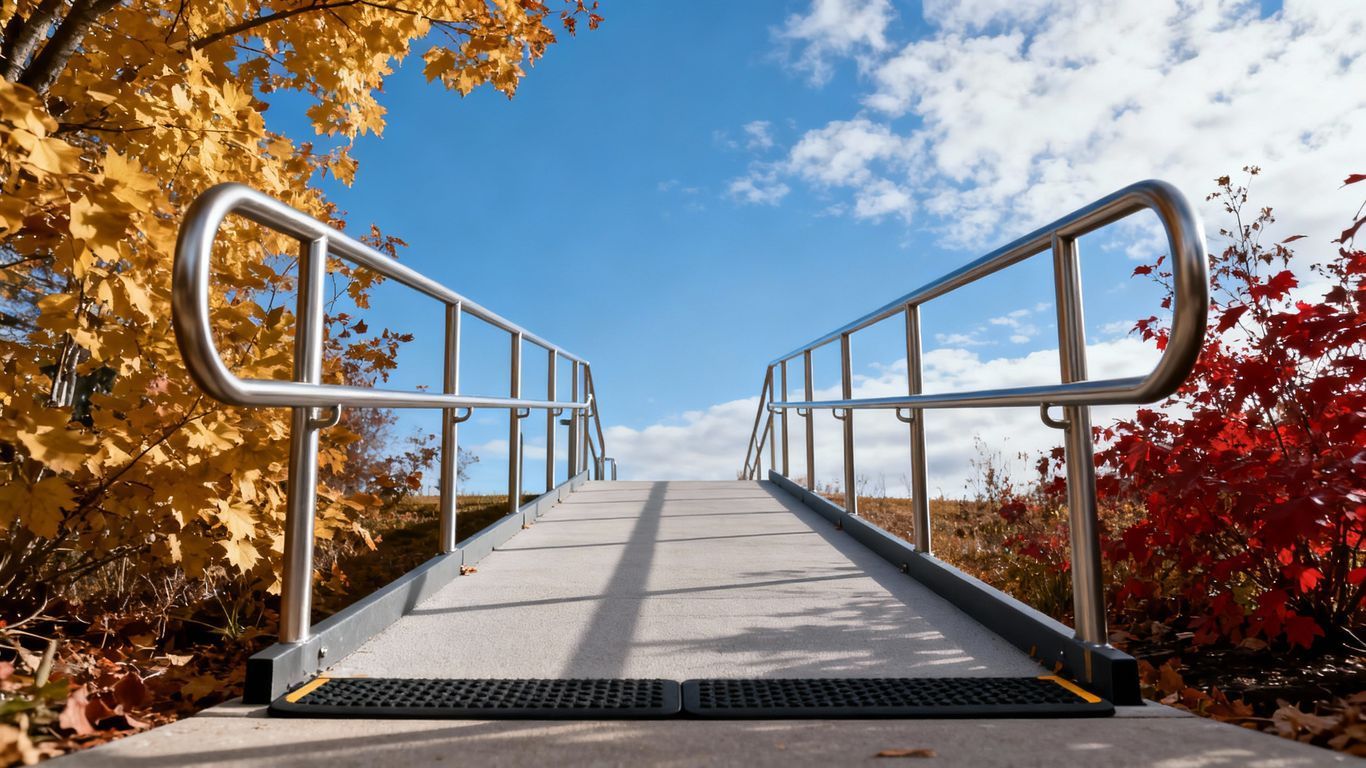Top Benefits of Custom Vehicle Adaptations for Individuals with Disabilities in Dalton
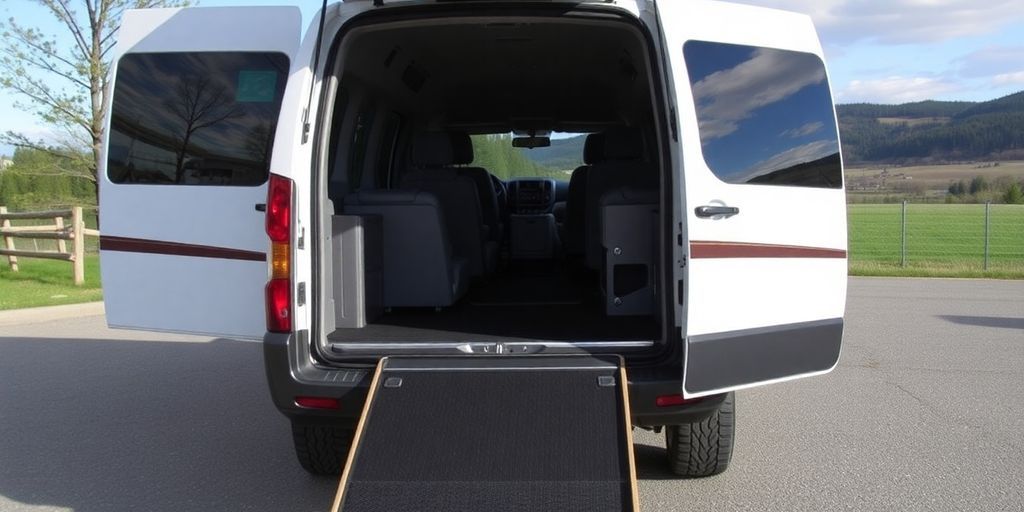
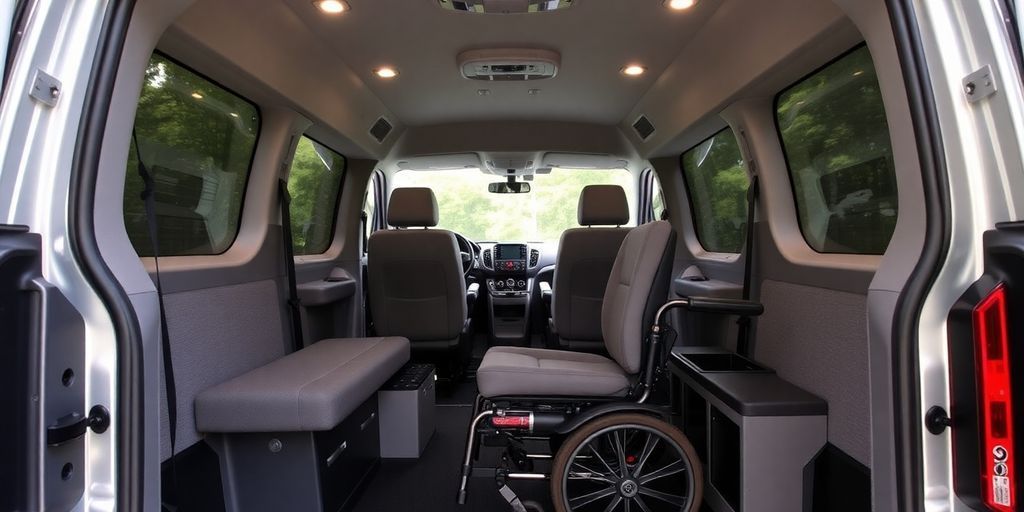
Custom vehicle adaptations are specially designed changes made to cars and trucks to help individuals with disabilities. These modifications can make a big difference in how people get around, allowing for more freedom and independence. In Dalton, these adaptations are not just about driving; they also improve the overall quality of life for many individuals. Here are some of the key benefits of custom vehicle adaptations in Dalton.
Key Takeaways
- Custom vehicle adaptations help people move around more easily.
- They allow individuals to be more independent and do things on their own.
- Special driving controls make it easier for everyone to drive safely.
- Comfort features in adapted vehicles make rides more enjoyable.
- These modifications can also help caregivers support their loved ones better.
1. Enhanced Mobility Solutions
For individuals with disabilities, having the right vehicle adaptations can make a huge difference in their daily lives. Custom vehicle modifications provide enhanced mobility solutions that allow for greater freedom and independence. Here are some common adaptations that can be made:
- Ramps for easy entry and exit
- Swivel seats that make getting in and out simpler
- Hand controls for those who may not be able to use standard pedals
These modifications not only improve access but also ensure that individuals can travel safely and comfortably.
Custom adaptations can transform a vehicle into a personal mobility solution, making it easier for individuals to navigate their world with confidence.
In summary, enhanced mobility solutions are essential for promoting independence and improving the quality of life for those with disabilities. By investing in these adaptations, individuals can enjoy a more active and fulfilling lifestyle.
2. Improved Independence
Having a custom vehicle can greatly boost a person's sense of independence. With the right adaptations, individuals can drive themselves without needing help from others. This freedom allows them to manage their own schedules and travel wherever they want. Here are some key benefits of improved independence through vehicle adaptations:
- Self-Driving Capability: Custom modifications like hand controls for cars enable individuals to operate their vehicles independently.
- Personalized Features: Each vehicle can be tailored to meet specific needs, ensuring comfort and ease of use.
- Greater Control: With the right equipment, drivers can regain control over their transportation, leading to a more fulfilling life.
Custom vehicle adaptations not only enhance mobility but also empower individuals to live life on their own terms.
In summary, improved independence through vehicle adaptations is about more than just driving; it's about reclaiming a sense of self and freedom.
3. Customized Driving Controls
Customized driving controls are essential for individuals with disabilities, allowing them to drive safely and comfortably. These adaptations can significantly enhance the driving experience. Here are some common modifications:
- Hand controls: These allow drivers to operate the accelerator and brake using their hands instead of their feet.
- Steering aids: Devices like spinner knobs help with steering, making it easier for those with limited arm movement.
- Pedal extensions: These can bring the pedals closer to the driver, making it easier to reach them.
Custom driving controls not only improve safety but also provide a sense of freedom and independence.
With these adaptations, individuals can enjoy a more personalized driving experience, tailored to their specific needs. The right modifications can make a world of difference, ensuring that everyone has the opportunity to drive confidently and safely. Common modifications include seat belt adjustments, safety bars and straps, ramps, swivel seats, and hand controls.
4. Accessible Vehicle Modifications
Accessible vehicle modifications are essential for ensuring that individuals with disabilities can travel safely and comfortably. These modifications can greatly enhance the driving experience. Common changes include:
- Seat belt adjustments to ensure safety and comfort.
- Ramps for easy entry and exit from the vehicle.
- Swivel seats that make it easier to get in and out.
- Hand controls for those who may have difficulty using standard pedals.
These adaptations not only improve mobility but also promote independence and confidence on the road.
Making vehicles accessible is not just about convenience; it’s about creating opportunities for individuals to engage with their communities and live fulfilling lives.
5. Safety Features for Drivers
When it comes to driving, safety is a top priority, especially for individuals with disabilities. Custom vehicle adaptations can significantly enhance safety features to ensure a secure driving experience. Here are some key safety features that can be included in adapted vehicles:
- Seat belt adjustments: Ensuring that seat belts fit properly is crucial for safety.
- Safety bars and straps: These provide extra support and stability while driving.
- Ramps and swivel seats: These features make it easier to enter and exit the vehicle safely.
- Hand controls: Allow drivers to operate the vehicle without using their feet, which can be safer for some individuals.
Custom adaptations not only improve safety but also give drivers the confidence they need to travel independently.
By focusing on these essential safety features, adapted vehicles can help drivers feel more secure and in control on the road. Safety is not just about protection; it’s about enabling freedom and independence for everyone.
6. Comfort Enhancements
When it comes to vehicle adaptations, comfort is a key factor for individuals with disabilities. Custom modifications can greatly improve the driving experience by ensuring that every ride is as pleasant as possible. Here are some ways comfort can be enhanced:
- Adjustable seating: Seats can be modified to provide better support and positioning.
- Climate control: Features like heated seats or improved ventilation can make a big difference.
- Noise reduction: Special materials can be used to minimize outside noise, creating a quieter environment.
Comfort in a vehicle is not just about luxury; it’s about making every journey enjoyable and stress-free.
These enhancements not only make driving easier but also help individuals feel more at ease while traveling. With the right adaptations, every trip can be a comfortable one, allowing for a more enjoyable experience on the road. Common modifications include seat belt adjustments, safety bars and straps, ramps, swivel seats, and hand controls.
7. Increased Accessibility
Increased accessibility in vehicles is crucial for individuals with disabilities. Custom adaptations can make a significant difference in how easily someone can enter and exit a vehicle. Here are some key points to consider:
- Ramps and Lifts: These features allow for easy entry and exit, especially for wheelchair users.
- Swivel Seats: These seats rotate to make getting in and out of the vehicle much simpler.
- Hand Controls: For those who may not be able to use standard pedals, hand controls provide an alternative way to drive safely.
Making vehicles more accessible not only helps individuals with disabilities but also promotes a sense of independence and freedom.
With these modifications, the driving experience becomes more enjoyable and less stressful, allowing for greater participation in daily activities.
8. Tailored Seating Arrangements
Tailored seating arrangements in vehicles can make a huge difference for individuals with disabilities. These custom setups ensure comfort and ease of access. Here are some key benefits of tailored seating:
- Transfer seats for handicap accessible vehicles help individuals move from their wheelchair or scooter into the vehicle's seat easily.
- Adjustable seating allows for better positioning, which can reduce discomfort during travel.
- Specialized seats can provide additional support, making long trips more enjoyable.
Having the right seating can transform the driving experience, making it safer and more comfortable for everyone involved.
9. Advanced Technology Integration
In today's world, technology plays a crucial role in making life easier for individuals with disabilities. Advanced technology integration in vehicles can significantly enhance the driving experience and overall mobility. Here are some key benefits of integrating technology into custom vehicle adaptations:
- Smart Driving Aids: Features like adaptive cruise control and lane-keeping assist help drivers stay safe and focused.
- Voice-Activated Controls: These allow drivers to operate various functions hands-free, making driving more accessible.
- GPS Navigation Systems: Advanced navigation tools can provide real-time traffic updates and route suggestions tailored to the driver's needs.
Integrating technology into vehicles not only improves safety but also empowers individuals to regain their independence and confidence on the road.
By choosing vehicles with these innovative features, individuals can enjoy a more comfortable and secure driving experience. Companies like Paravan offer tailor-made mobility solutions that include unique disability and wheelchair accessible vehicles, ensuring that every driver can find the right fit for their needs.
10. Support for Caregivers
Caring for individuals with disabilities can be a challenging yet rewarding experience. Custom vehicle adaptations not only benefit the individuals but also provide essential support for their caregivers. Here are some key ways these adaptations help caregivers:
- Easier Transportation: Modified vehicles make it simpler for caregivers to transport their loved ones, reducing physical strain.
- Increased Safety: With specialized features, caregivers can feel more secure knowing that their passengers are safe during travel.
- Enhanced Comfort: Custom adaptations can create a more comfortable environment, making trips more enjoyable for both the caregiver and the individual.
Having a strong support system can significantly impact their ability to drive confidently and safely.
In summary, custom vehicle adaptations play a vital role in providing family support in driving independence, making life easier for both caregivers and those they assist.
11. Cost-Effective Transportation
Custom vehicle adaptations can lead to significant savings in transportation costs for individuals with disabilities. By investing in tailored modifications, users can enjoy a range of financial benefits, including:
- Reduced travel expenses: Customized vehicles can help minimize the need for specialized transport services, which can be costly.
- Increased vehicle lifespan: Proper adaptations can enhance the durability of the vehicle, leading to fewer repairs and replacements over time.
- Lower insurance premiums: Some insurance companies offer discounts for vehicles equipped with safety features and modifications that reduce risk.
Investing in custom adaptations not only improves mobility but also makes financial sense in the long run.
Overall, the right modifications can transform a vehicle into a cost-effective solution for daily travel needs, ensuring that individuals can move freely without breaking the bank.
12. Community Engagement Opportunities
Community engagement is vital for individuals with disabilities, as it fosters connections and support. Custom vehicle adaptations can play a significant role in enhancing these opportunities. Here are some ways these adaptations can help:
- Participate in local events: With accessible vehicles, individuals can easily attend community gatherings, workshops, and social events.
- Join support groups: Customized vehicles allow for easier travel to meetings and support sessions, helping individuals connect with others who share similar experiences.
- Volunteer and give back: Having reliable transportation enables individuals to engage in volunteer work, contributing positively to their communities.
Engaging with the community not only helps individuals with disabilities feel included but also promotes understanding and awareness among all community members.
By making transportation more accessible, we can create a more inclusive environment where everyone can thrive and participate actively in community life.
13. Personalized Vehicle Design
When it comes to vehicle adaptations, personalization is key. Each individual has unique needs and preferences, which is why custom vehicle designs are so important. Here are some common features that can be tailored:
- Seat belt adjustments for better safety and comfort.
- Swivel seats that make getting in and out easier.
- Hand controls that allow for easier driving.
These modifications not only enhance usability but also ensure that the vehicle feels like a personal space.
Customizing a vehicle can significantly improve the driving experience for individuals with disabilities, making it more enjoyable and accessible.
In summary, personalized vehicle design is about creating a space that meets the specific needs of the driver, ensuring both comfort and safety. This approach can lead to a more independent and fulfilling life.
14. Better Quality of Life
Custom vehicle adaptations can significantly improve the quality of life for individuals with disabilities. These modifications allow for greater freedom and independence, enabling users to engage more fully in their communities and daily activities. Here are some key benefits:
- Increased mobility: With tailored adaptations, individuals can travel more easily, whether for work, school, or leisure.
- Enhanced social interactions: Accessible vehicles make it simpler to visit friends and family, fostering stronger relationships.
- Greater participation in activities: Individuals can join community events, hobbies, and outings that were previously challenging to access.
By investing in custom vehicle adaptations, individuals not only gain independence but also experience a richer, more fulfilling life.
Overall, these adaptations lead to a more positive outlook and a sense of belonging in society, making a real difference in everyday living.
15. Increased Confidence
When individuals with disabilities have access to custom vehicle adaptations, their confidence can significantly grow. These adaptations allow them to drive independently, which can lead to a more fulfilling life. Here are some key points on how these modifications boost confidence:
- Independence: Being able to drive without assistance fosters a sense of freedom.
- Control: Customized driving controls give users the ability to manage their vehicle comfortably.
- Social Engagement: With increased mobility, individuals can participate more in community activities.
Custom vehicle adaptations not only enhance mobility but also empower individuals to take charge of their lives.
Additionally, events that focus on adaptive driving gear provide opportunities to learn about the latest innovations. For instance, you can explore the latest adaptive driving gear at upcoming events! This helps individuals discover new solutions for driver independence and accessibility, making them feel more capable and confident on the road.
16. Streamlined Transportation
Streamlined transportation is essential for individuals with disabilities, ensuring they can travel easily and efficiently. Transportation assistance plays a crucial role in this process. Here are some key benefits of streamlined transportation:
- Convenient Access: Services like paratransit offer door-to-door transportation, making it easier for individuals to get where they need to go.
- Tailored Solutions: These services are designed specifically for the mobility needs of individuals with disabilities, ensuring a comfortable and safe journey.
- Reduced Wait Times: Streamlined transportation often means shorter wait times, allowing for more flexibility in travel plans.
Streamlined transportation not only enhances mobility but also promotes independence and confidence in individuals with disabilities.
By focusing on these aspects, we can create a more inclusive environment that supports the needs of everyone in the community.
17. Specialized Equipment Installation
Specialized equipment installation is crucial for making vehicles more accessible for individuals with disabilities. These modifications can greatly enhance the driving experience. Here are some common types of specialized equipment that can be installed:
- Hand controls: These allow drivers to operate the vehicle without using their feet.
- Swivel seats: These make it easier for individuals to get in and out of the vehicle.
- Ramps: These provide a smooth entry for wheelchair users.
In addition to these, other modifications can include seat belt adjustments and safety bars.
Installing specialized equipment not only improves mobility but also promotes independence and confidence for drivers.
Overall, the right adaptations can transform a standard vehicle into a personalized transportation solution that meets the unique needs of each individual.
18. Adapted Storage Solutions
When it comes to vehicle adaptations, having the right storage solutions is crucial for individuals with disabilities. Custom storage options can make a big difference in how easily someone can access their belongings while on the go. Here are some key benefits of adapted storage solutions:
- Easy Access: Storage areas can be designed to be within reach, making it simpler for users to grab what they need.
- Organized Space: Customized compartments help keep items organized, reducing clutter and confusion.
- Safety First: Properly secured storage prevents items from shifting during travel, ensuring a safer ride.
Adapted storage solutions not only enhance convenience but also promote independence for users, allowing them to travel with confidence and ease.
19. Emergency Preparedness Features
When it comes to safety, having the right features in a vehicle can make a big difference. Emergency preparedness features are essential for individuals with disabilities, ensuring they are ready for unexpected situations. Here are some important features to consider:
- First Aid Kits: Always have a well-stocked first aid kit in your vehicle.
- Emergency Contact Information: Keep a list of emergency contacts easily accessible.
- Roadside Assistance Tools: Include items like flares, reflective triangles, and a flashlight.
Being prepared can help you feel more secure while traveling. Having the right tools and information can make all the difference in an emergency.
Incorporating these features into custom vehicle adaptations not only enhances safety but also provides peace of mind for both drivers and passengers. Remember, being prepared is key to handling any situation that may arise on the road.
20. Enhanced Visibility Options
When it comes to driving, having clear visibility is crucial for safety. Custom vehicle adaptations can significantly improve visibility for individuals with disabilities. Here are some ways these adaptations can help:
- Adjustable mirrors: These can be positioned to provide the best view, reducing blind spots.
- Enhanced lighting: Additional lights can be installed to brighten the area around the vehicle, making it easier to see at night or in poor weather.
- Rearview cameras: These provide a clear view of what’s behind the vehicle, helping to avoid accidents when reversing.
Improving visibility not only helps in driving safely but also boosts the driver’s confidence on the road.
With these enhancements, drivers can feel more secure and aware of their surroundings, making their driving experience much more enjoyable.
In summary, visibility is a key factor in safe driving, and custom adaptations can make a big difference.
21. User-Friendly Interfaces
User-friendly interfaces are essential for making driving easier and safer for individuals with disabilities. These interfaces are designed to be intuitive and accessible, ensuring that everyone can operate their vehicles with confidence. Here are some key features that enhance usability:
- Simple Controls: Many adaptations include hand controls for brakes and accelerator for people unable to operate foot pedals, generally in combination with automatic transmission.
- Clear Displays: Easy-to-read dashboards help drivers monitor their vehicle's performance without confusion.
- Voice Activation: Some systems allow drivers to use voice commands, making it easier to control navigation and entertainment features.
A well-designed interface can significantly improve the driving experience, allowing users to focus on the road rather than struggling with complicated controls.
22. Customizable Features
Customizable features in vehicles for individuals with disabilities allow for a more personalized driving experience. These adaptations can significantly enhance comfort and usability. Here are some key aspects of customizable features:
- Adjustable seating: Seats can be modified to fit individual needs, ensuring better support and comfort.
- Control systems: Drivers can choose from various control options, such as hand controls or joystick systems, to suit their preferences.
- Storage solutions: Vehicles can be equipped with tailored storage spaces for mobility aids, ensuring easy access and organization.
Customization not only improves the driving experience but also promotes a sense of ownership and independence for the user.
In summary, customizable features make vehicles more accessible and enjoyable for individuals with disabilities, allowing them to travel with greater ease and confidence. Common modifications include seat belt adjustments, safety bars and straps, ramps, swivel seats, and hand controls.
23. Improved Travel Experience
Traveling can be a challenge for individuals with disabilities, but custom vehicle adaptations can significantly enhance the overall experience. These modifications make journeys smoother and more enjoyable. Here are some key benefits of improved travel experiences:
- Easier Access: Vehicles can be equipped with ramps and swivel seats, making it simpler for individuals to get in and out.
- Comfortable Rides: Customized seating arrangements ensure that passengers are comfortable during long trips.
- User-Friendly Controls: Hand controls and other adaptations allow for easier driving, giving individuals more control over their travel.
Custom vehicles not only provide accessibility but also promote a sense of freedom and independence for those who use them.
With these enhancements, individuals can enjoy a more positive travel experience, making every trip a little easier and more enjoyable. Whether it's a short drive or a long journey, the right adaptations can make all the difference.
24. Long-Term Investment
Investing in custom vehicle adaptations is a smart choice for individuals with disabilities. These modifications can lead to significant savings over time. Here are some key points to consider:
- Increased Resale Value: Vehicles that are adapted for accessibility often retain a higher resale value compared to standard vehicles.
- Reduced Transportation Costs: With the right modifications, individuals can save on transportation expenses, making it a cost-effective solution in the long run.
- Insurance Benefits: Many insurance companies offer discounts for vehicles that have been modified for safety and accessibility, which can further reduce costs.
Custom vehicle adaptations are not just about immediate needs; they are a long-term investment in independence and mobility.
By choosing the right modifications, individuals can ensure that their vehicles meet their needs for years to come, making it a wise financial decision.
25. Positive Social Impact
Custom vehicle adaptations not only help individuals with disabilities but also create a ripple effect in the community. These modifications keep drivers with disabilities on the road and promote inclusivity. Here are some key benefits of these adaptations:
- Increased Participation: Individuals can engage more in community events and activities.
- Enhanced Awareness: Custom vehicles raise awareness about the needs of people with disabilities.
- Stronger Connections: These adaptations foster relationships between individuals and their communities.
By making transportation accessible, we can build a more inclusive society where everyone has the chance to thrive.
Making a positive difference in our community is important. At North Georgia Mobility, we believe everyone deserves the chance to live freely and comfortably. If you or someone you know needs help with mobility solutions, don’t hesitate to reach out! Visit our website to learn more about how we can assist you today!
Conclusion
In summary, custom vehicle adaptations offer many advantages for people with disabilities in Dalton. These modifications make it easier for individuals to drive or ride comfortably, giving them more freedom and independence. With the right changes, they can enjoy a better quality of life, connect with their community, and participate in activities they love. Overall, these adaptations are not just about transportation; they are about empowerment and making everyday life more enjoyable.
Frequently Asked Questions
What are custom vehicle adaptations?
Custom vehicle adaptations are special changes made to cars or vans that help people with disabilities drive or ride safely and comfortably.
Who can benefit from vehicle adaptations?
Anyone with a disability, whether they are drivers or passengers, can benefit from vehicle adaptations tailored to their needs.
How do these adaptations improve safety?
These adaptations often include features like better seat belts, special controls, and ramps, which help keep everyone safe while traveling.
Are vehicle adaptations expensive?
The cost of vehicle adaptations can vary widely. Some are affordable, and there are often financial aid options available to help.
Can I get help finding the right adaptations for my needs?
Yes! Many organizations and specialists can help you figure out which adaptations will work best for you.
How do I maintain my adapted vehicle?
Just like any car, you should regularly check your adapted vehicle for any needed repairs and keep it clean to ensure it stays in good shape.
